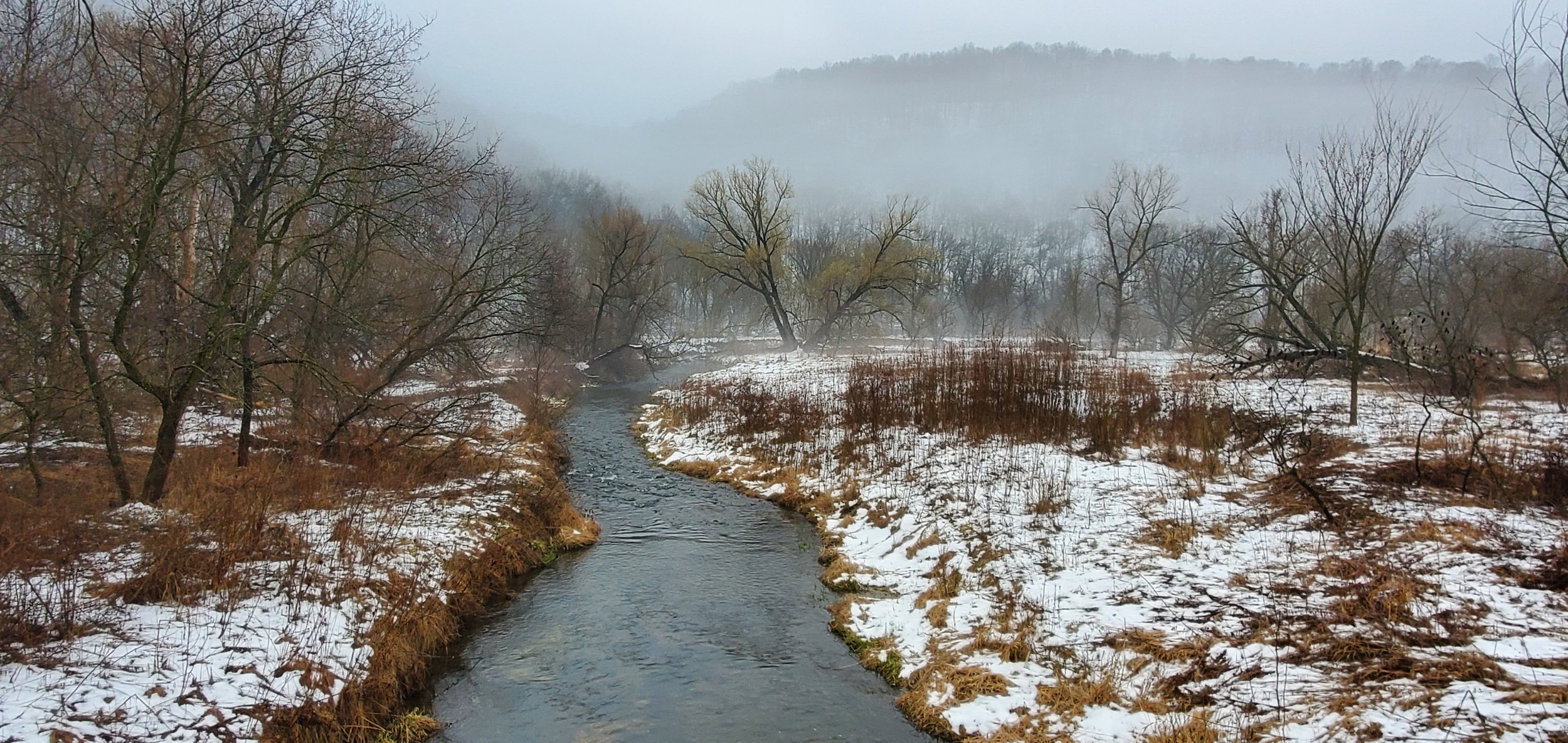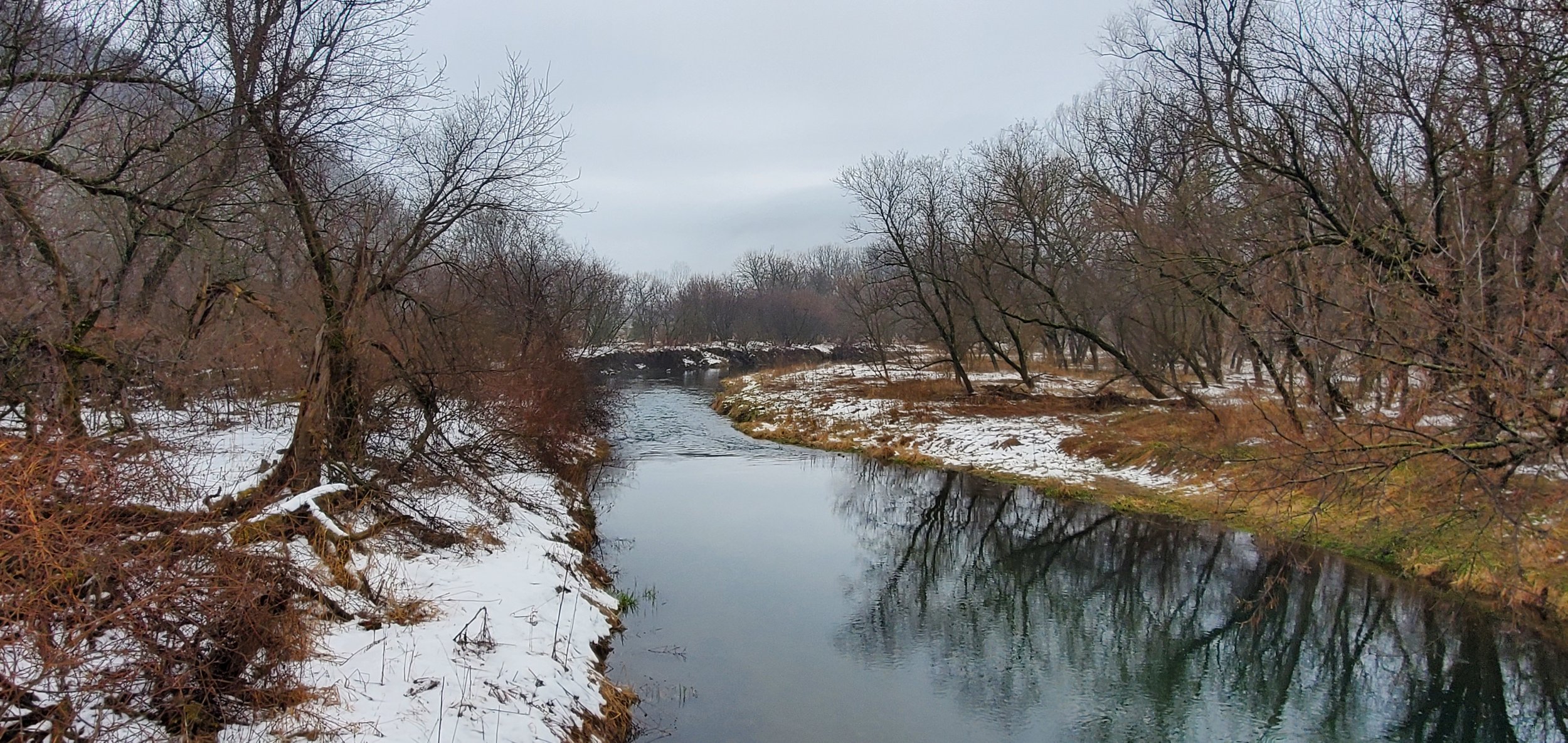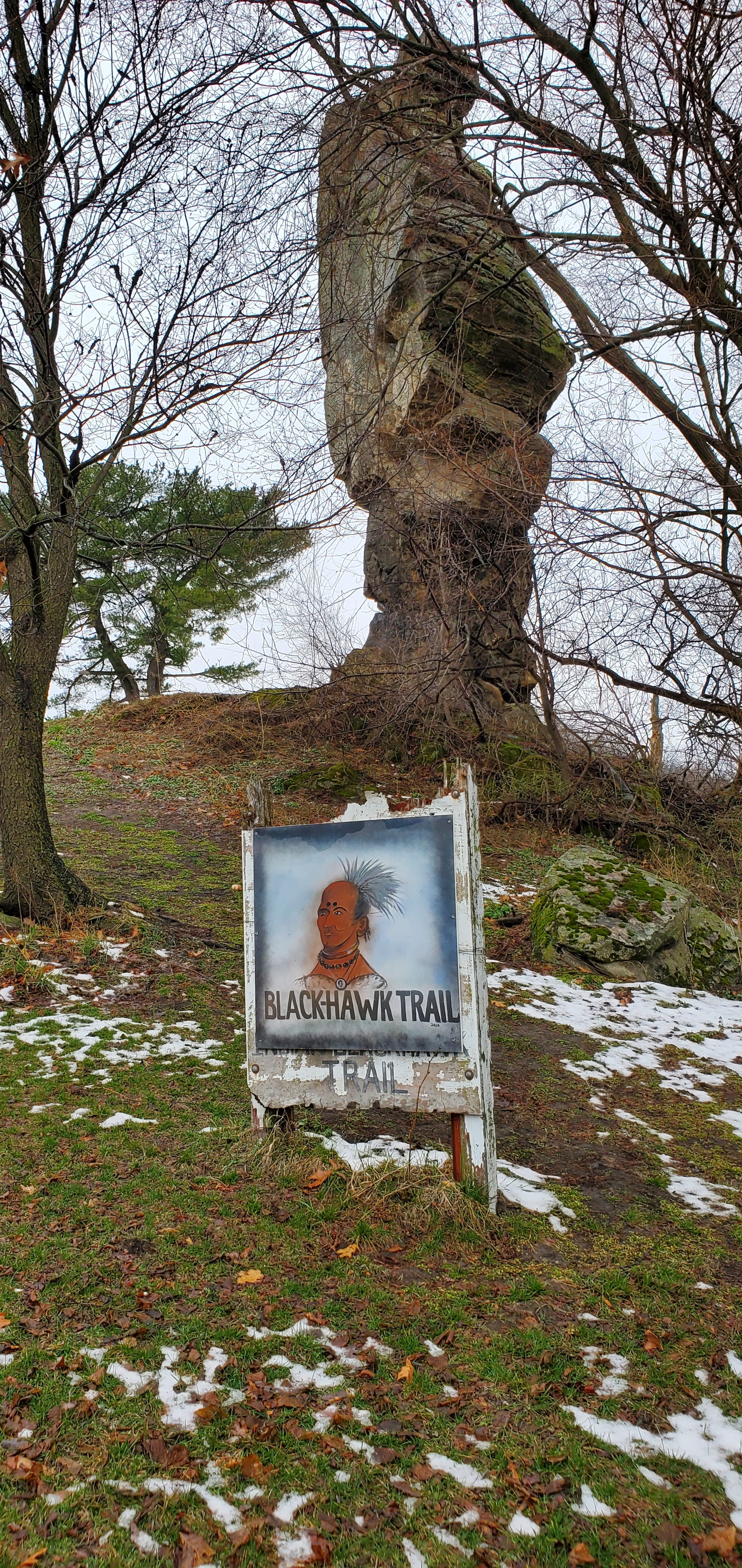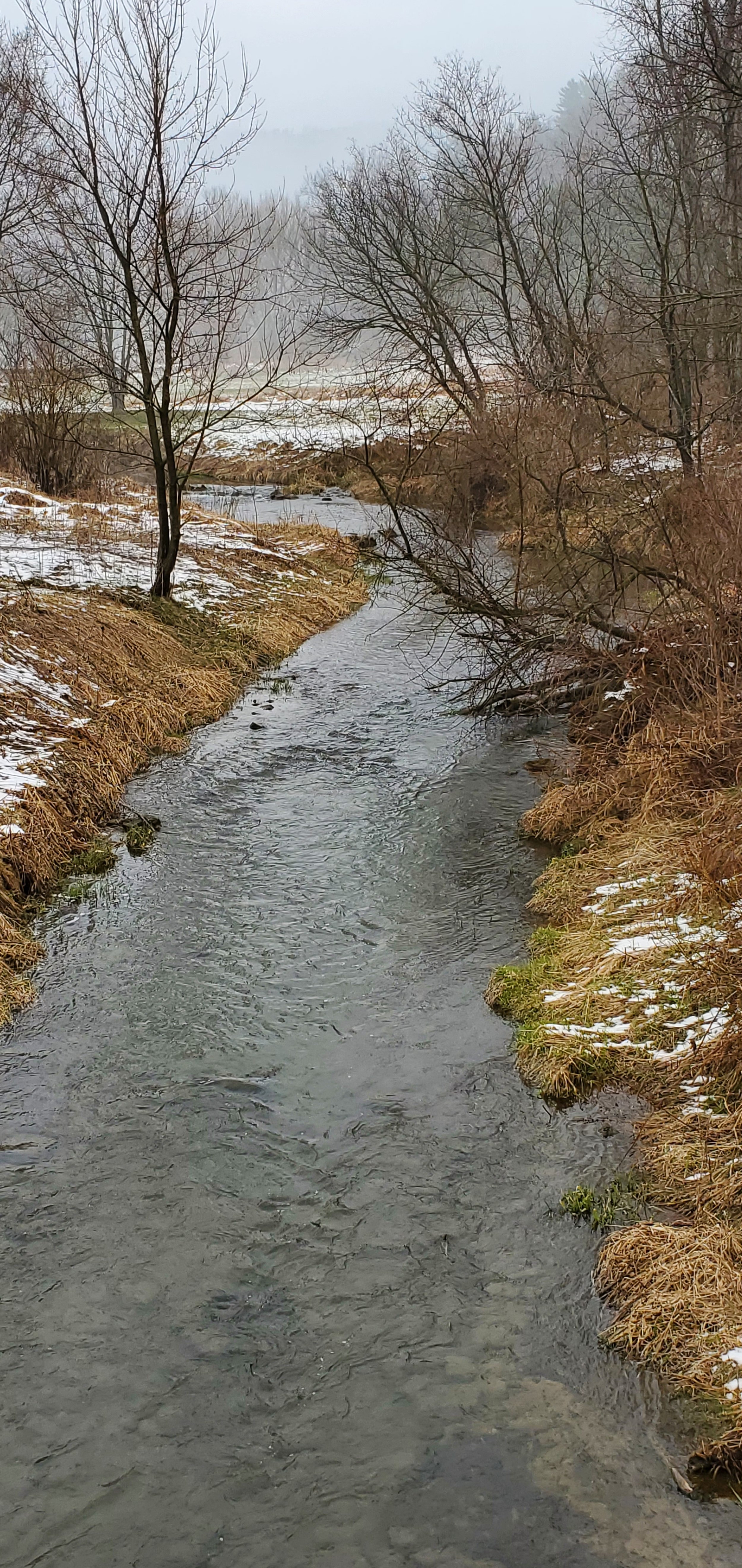Bad Axe River
The Bad Axe, a beautiful river, but with a sad and violent history. Really not much more than a creek.
Wholly in Vernon County and typical of the Driftless, there are two branches of the Bad Axe. The North starts off at Runge hollow, and the South at Sidie hollow. Both of these are really flowages, man-made lakes held back by earthen dams. Both are fed by many small streams.
Local lore has it that the stones at the river mouth made poor axes. According to Wikipedia "Bad axe" is a translation from the French, "la mauvaise hache", but the origin of the name is unknown. Vernon County was to be named after the Bad Axe but it was decided against it, probably because it was too close to ‘badass.’
A class 1 trout stream, the U.S. Fish and Wildlife service maintains a hatchery and interpretative center south of Genoa near the river’s mouth. At the mouth, anglers can fish for trout, Walleye, Sturgeon, and Catfish.
In 1832, it was near the confluence of the Bad Axe and the Mississippi where the Battle of the Bad Axe took place, at the end of the Black Hawk war. The causes of the war were complex. Black Hawk was a warrior and a war chief with the Sac and Fox tribe. Previously, Blackhawk had fought in the war of 1812, siding with the British. He had thought an American defeat would discourage settlement on ancestral lands.
Hoping to reclaim some land Black Hawk and his band, crossed over from present day Iowa into Illinois. Allied, were the Potawatomi and Ho-Chunk. Together, they were called the ‘British Band.’ Black Hawk had done this before, but had been persuaded to go back West across the river each time. He may have been trying to establish an Indian confederacy with British help to resist white settlement; this is in dispute.
It doesn’t appear Black Hawk was expecting war, and half his band were non-combatants. Many of the Sac and Fox preferred to stay in Iowa. This faction was led by Keokuk. Though not a chief, he was a skilled orator. He had visited the eastern cities in 1824 and didn’t think opposing the Americans was smart nor feasible.
Both Keokuk and Black Hawk disputed the 1804 treaty of St. Louis, that ceding land. Black Hawk signed another treaty in 1816, but disputed this as well. He said, "whites were in the habit of saying one thing to the Indians and putting another thing down on paper".
Indian scouts came upon 275 militia camped near the Rock River. Black Hawk sent three scouts to parley and establish peace. The militia may not have known the British Band were nearby. Suspicious to begin with, they saw natives watching the proceeding and shot the three scouts. Two survived and made it back to Black Hawk’s camp.
This led to the Battle of Stillman’s Run, a victory for the natives, but a chaotic, bloody retreat for the militia and the beginning of troubles for Black Hawk and his band.
They went raiding, causing panic among settlers, with many fleeing to Chicago, which at the time was still a small town.
President Jackson appointed General Winfield Scott to command. He was to relieve General Henry Atkinson who was having a tough time. Much of this was due to the poor intelligence supplied by local natives. They kept giving the militia bad directions and sending them through swamps.
The British Band suffered a major defeat in 1832 at the Battle of Wisconsin Heights. But this allowed many women and children to escape to the West. The army pursued them towards the Mississippi, and by now the British Band was in rough shape. The army followed a trail of the deceased and the remains of horses the starving natives used to survive.
Black Hawk tried to surrender, but no translator was present and his attempt came to naught. He tried to surrender at least once more. By then, the army and militia had greater firepower and weren’t in the mood to accept a surrender. Things came to a head at the Battle of the Bad Axe on August 2, 1832. The Army lost 14 men; 260 Natives were killed-110 of those by drowning trying to cross the river.
Future presidents Zachary Taylor, Abraham Lincoln and Jefferson Davis served in the army at the time, and all were involved in the Black Hawk War.
Black Hawk seeking refuge with the Ojibwe to the North, was seen by a Ho-Chunk man while camping near Tomah, Wisconsin. Local natives had convinced him to surrender, which he did and was taken prisoner. While out East on a tour of the big cities, Black Hawk met with President Jackson and eventually released.
Personally, I fell in love with the Bad Axe valley and lived there for 15 years. Our first year was great, so peaceful. After 20 years of wandering, I finally found a place to rest. Trouble was, it was no longer a secret. With the advent of ATVs it’s gotten tougher to find any peace in the country. My farmer neighbor sold some land and some unsavory neighbors moved in next door. That did it for me. I held on as long as I could, but eventually I had to move to the city, just for the peace and quiet.
Black Hawk has a hockey team named after him, a military helicopter, a liberty ship, not to mention schools, bridges, and a county in Iowa.
“Rock River was a beautiful country. I loved my towns, my cornfields and the home of my people. I fought for it.” - Chief Black Hawk
James Hoban is a retired Merchant Marine Officer and writer. He started off washing dishes and retired at the rank of Chief Mate after 34 years of going to sea. He’s lived in Chile and Thailand and traveled extensively in the Americas, Europe, Africa, and Asia. Now he goes fishing and plays the fiddle. Hoban makes his home in the Driftless.








